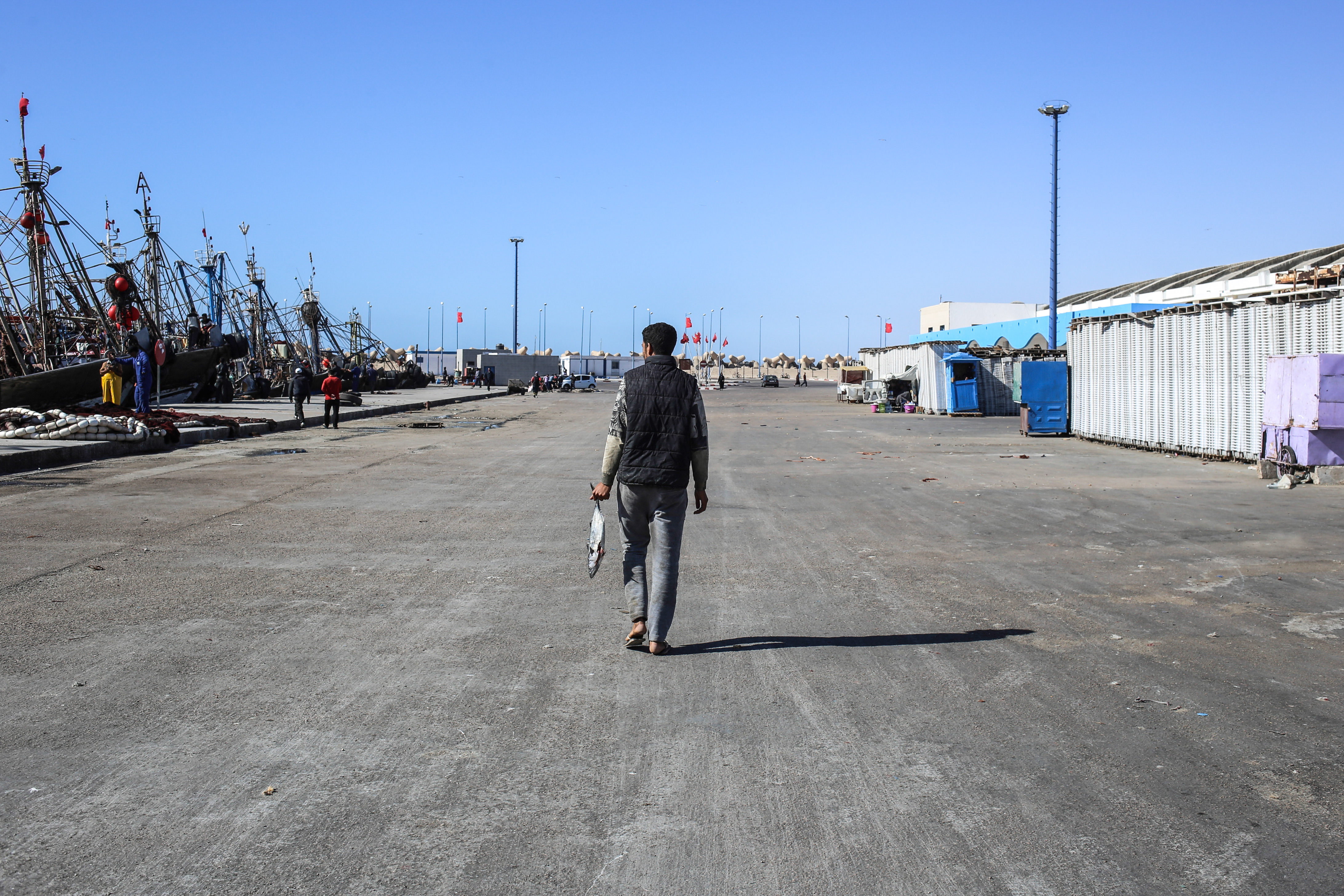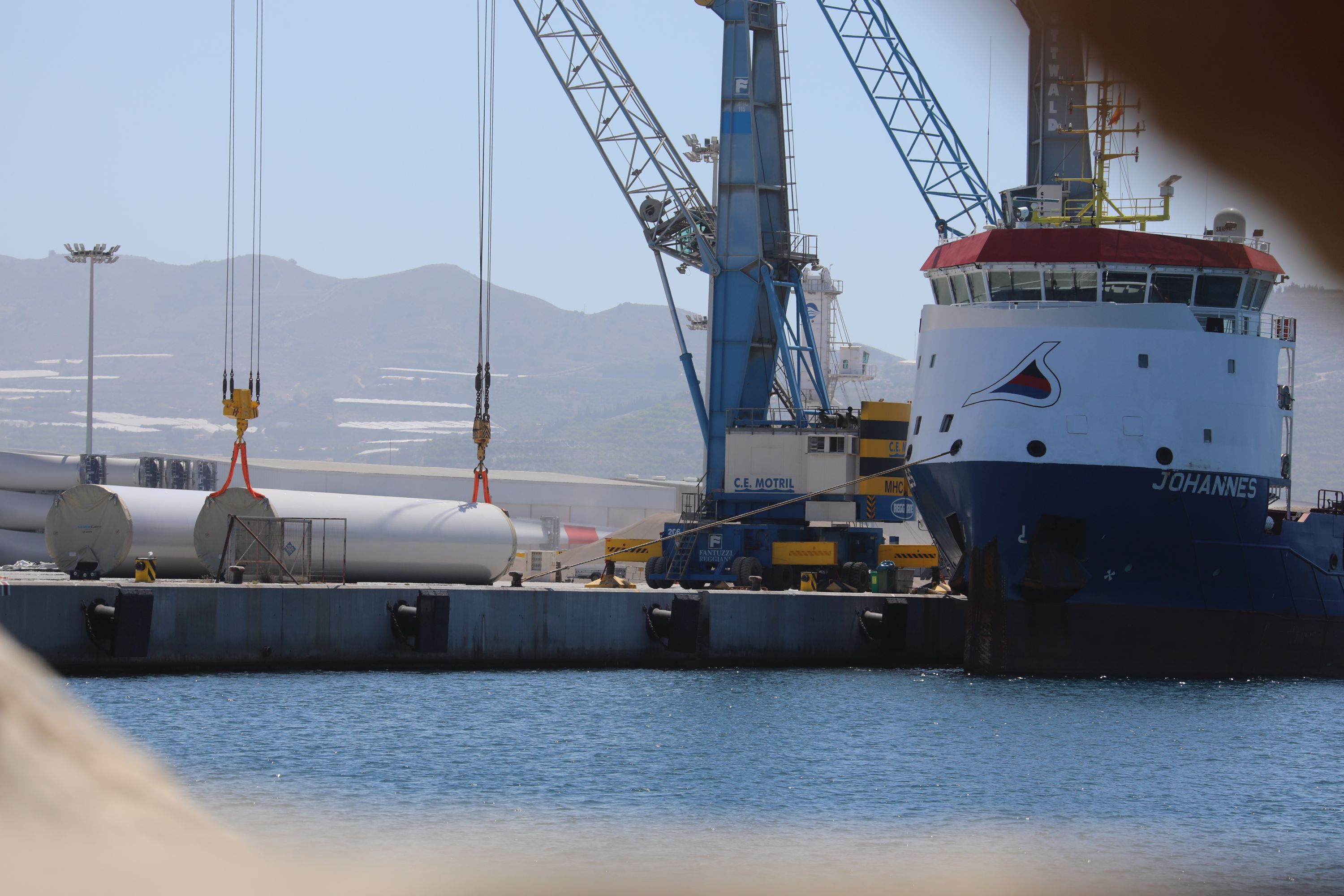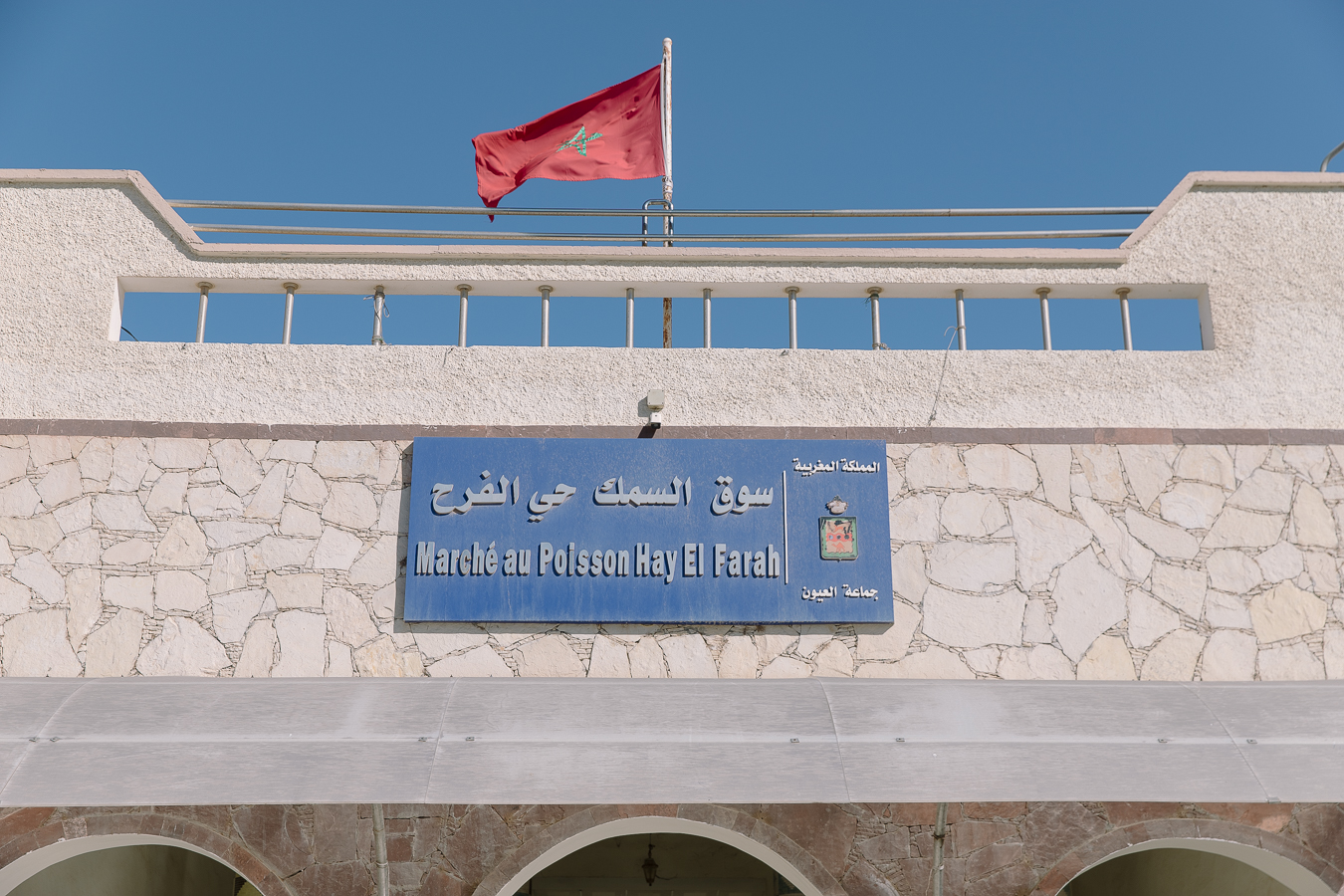
The extraction and export of phosphoric rock from the Bou Craa mines at El Aaiun, Western Sahara, is increasing day by day.
Western Sahara Resource Watch (WSRW) continues to monitor phosphate rock exports from occupied Western Sahara. This update report provides details of exports and vessels involved in the trade over the period from 1 June until 31 August 2012 (the Observation Period).
Western Sahara Resource Watch (WSRW) continues to monitor phosphate rock exports from occupied Western Sahara. This update report provides details of exports and vessels involved in the trade over the period from 1 June until 31 August 2012 (the Observation Period).
During the Observation Period a total of 20 bulk carriers called into the phosphate loading dock at El Aaiun on average of every 4-1/2 days and with a cargo capacity of 40,000 tonnes. The vessels were monitored for the time taken to be loaded and their destinations. A table giving details of the vessels and their destinations is part of this report.
During the Observation Period, the 20 vessels carried away (or were due by early September to carry away) a total of 814,000 tonnes of Saharawi phosphate. Rounding this amount to 800,000 tonnes for the three months of the Observation Period, an annual average export of 3.2 million tonnes is calculated. However, the five month period from 1 January until 31 May had fewer bulk carrier arrivals at El Aaiun. As such total phosphate exports in 2012 from occupied Western Sahara will probably be in the range of 2.5 to 2.8 million tonnes.
During the summer 2012 Observation Period, the market price for phosphate rock of the quality produced at the Bu Craa minesite averaged $175/tonne. Therefore, the total market value of phosphate rock exported from Western Sahara during the Observation Period was (814,000 tonnes x $175/tonne =) $142,450,000. It follows that the predicted market value of phosphate exports from occupied Western Sahara for 2012 will be at least $400 million.
The export trade in phosphate continues to enrich Morocco as the occupying power in Western Sahara. Despite its value, the export of phosphate rock remains unremarked by the United Nations and the organized international community. There has also been little concern expressed about the depletion or long term exhaustion of phosphate rock reserves at Bu Craa. The current export trade is depleting the resource at a rate of at least 2 % annually.
Click below to see the table with details of the vessels and their destinations :
Table with vessels and destinations Summer 2012 (66 KB)
New report: Certified occupation
International certification standards embellish Morocco’s controversial trade with fisheries and agricultural products in occupied Western Sahara, new report documents.
Certification giant SGS points fingers elsewhere
SGS blames everyone else for mistakes on MarinTrust certificates it had issued to Moroccan companies in occupied Western Sahara.
New report: Greenwashing Occupation
Out now: WSRW today publishes a new report outlining the massive - and deeply problematic - renewable energy projects that Morocco is developing in occupied Western Sahara.
GMP+ does not check if “sustainable” fish is legally caught
The world’s largest certification scheme for “safe and sustainable animal feed” does not check whether its certified fish feed companies source from illegal fisheries in occupied Western Sahara, where catches violate the Saharawi people’s right to self-determination.



